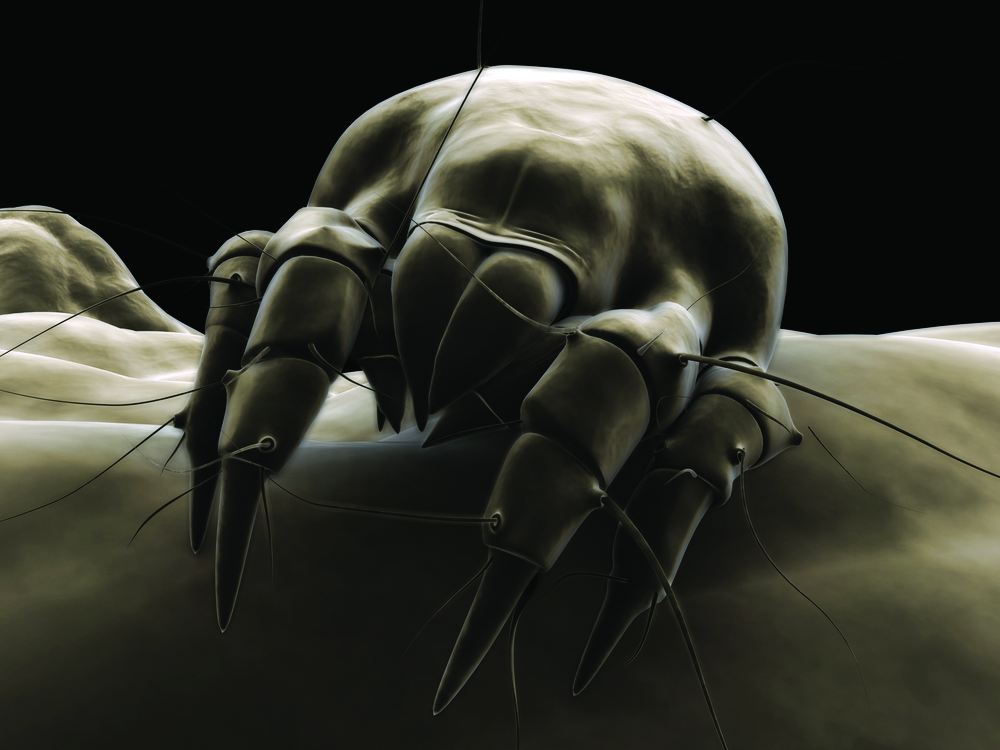- Home
- Non-Allergenic Bedding
Non-Allergenic Bedding

Allergy Relief Mattress Protectors
Over 50 million people in the U.S. today are affected by airborne allergens. Our products provide the first line of defense against dust mites, mold, bacteria, and other allergens with non-allergenic bedding, including RV mattress protectors, along with encasements for box springs, and pillows.
How Allergen Barrier Encasements Work
Allergic reactions are caused when we inhale the dust mite allergen, or more specifically the protein found in their feces and body remnants which can be as small as 10 micrometers (or microns) in size.
Dust mites already living within the mattress and pillow are trapped when the protective mattress cover encasement is applied. Because they are blocked from their food source (our dead skin cells), they eventually die. With a fabric pore size of less than 1.3 microns, mold, bacteria, and dust mite allergens are completely blocked by the encasement. You and your family are protected from developing an allergic reaction from breathing in these allergens. Routine cleaning and maintenance of the mattress protector will ensure the removal of any additional allergens landing on the outside of the protector while preventing the introduction of new dust mite harborage within the interior of the mattress or pillow.
 What is Allergy Bedding?
What is Allergy Bedding?
Allergy bedding, also referred to as dust mite bedding, is specifically designed to prevent dust mites, pet dander, pollen, mold spores, and other allergens from infesting your bed by acting as a physical barrier between you and the allergen.
Allergy relief mattress covers differ from standard mattress protectors. Not all mattress protection products are made equally. Dust mites and other common household allergens are so tiny that they can easily slip through the pores between the thread of normal bedding fabrics. Only specially designed fabrics with a pore size small enough to prevent the transfer of dust mites and their allergens through the fabric itself can be certified as allergy bedding. When cut off from their food supply dust mites are subjected to starvation and quickly die, preventing their spread.
The laminated fabric of our mattress protectors and encasements is certified to provide allergy relief. The "Classic" mattress protector, "Simplistic" mattress cover, and PillowSafe® pillow protector each offer consumers protection from dust mites, allergens, mold, and bacteria. Our "Ultimate" total mattress encasement offers extra protection on all six sides for those with extreme allergy issues, and allows the option of flipping the mattress. When combined with our "Simplistic" Overlay, consumers can keep their mattress protected while removing the topper for laundering or when maintenance is required.
Compared to standard hypoallergenic mattress covers and protectors, our smooth fabric offers a variety of advantages:
- Convenient to wipe down or lightly vacuum to remove allergens between washings.
- Resistant to flourishing of mold and bacteria in the mattress, decreasing the population of allergy-inducing spores.
- Breathable, so moisture is wicked away from the body for greater comfort in both hot and cold environments.
- Waterproof for protection against spills and fluids.
- Lightweight and launders like a sheet, resulting in less saturation and bulk when wet.
- Comfortable, noiseless, and soft to the touch, allowing for a peaceful night's sleep.
About Dust Mites
Dust mites are microscopic, sightless, eight-legged arthropods that are natural inhabitants of indoor environments. House dust mites, due to their very small size (250 to 300 microns in length) and translucent bodies, are not visible to the unaided eye. Of the many species of mites only a few are known to bite humans. The common house dust mites do not bite; instead they consume minute particles of organic matter. These pests are found throughout the house and thrive in high humidity and in areas where human dander is located such as mattresses, pillows, bed covers, upholstered furniture, and carpeting. Their droppings break down to an extremely fine powder and stick to these indoor materials. In fact, you may be sharing your bed with up to one million dust mites, which could be triggering your allergic reactions.
Allergy treatment professionals recommend allergen barrier encasements for your bedding as your first line of defense for dust mite allergies and asthma. Encasing your mattress, box spring, and pillow protects you from inhaling allergens that become airborne from your body's movements in bed.
Tips to Minimize Dust Mite Exposure*:
- Put mattresses, box springs, and pillows in special home and RV mattress covers that are allergy-proof or "non-allergenic."
- Wash blankets, sheets, and pillowcases in 130-degree water and dry in a hot dryer every week.
- Get rid of extra clutter in your home that may be collecting dust, such as stacks of books, knick-knacks, stuffed animals, or collectibles.
- Remove carpeting and replace it with washable throw rugs, or vacuum it frequently.
- Change and clean cooling and heating system filters once a month.
- Have your home, car, and office vacuumed and dusted frequently.
- Regularly wash curtains.
*Source: American Academy of Allergy Asthma and Immunology

 Follow Us on Twitter
Follow Us on Twitter